Did you know you can visit the locations of your favorite novels? Well, you can! Literary getaways are an experience that combines tourism and reading, transforming an urban route into a novel in motion. Each destination offers a small piece of history, a nod to the author, and a clue to better understand the atmosphere and themes of the work.
Start by choosing your favorite novels, anchored in real places. There are classics that crystallized in specific cities and landscapes, like a square that appears in the pages, a river, or a tower that holds secrets. Then, plan a route that connects these literary landmarks with your own preferences: museums, libraries, markets, cafes, viewpoints, and streets that evoke the tone of the novel.
The experience isn’t just about seeing places, but about feeling the story that has already captivated you firsthand, hearing imagined dialogues, and allowing the scenes to come alive again in your memory—in a more real way!
Literary getaways can be as ambitious as you want: from urban targets, like routes through an author’s city, to more intimate trips to towns or natural settings that evoke key passages. Some cities organize festivals and reading nights in evocative settings, turning the trip into a celebration of fiction.
You’ll return home with new mental images and the certainty that places can be bridges between fiction and reality. So, keep reading to discover some of the best literary getaways!

Literary Getaways: In Search of the English Charm of Pride and Prejudice
Few novels have captured the spirit, landscapes, and customs of early 19th-century England as elegantly as Jane Austen’s Pride and Prejudice. The story of wit, irony, and love between Elizabeth Bennet and the proud Mr. Darcy has transcended time, and today readers can delve into Austen’s world by exploring the real-life locations that inspired her descriptions and the most iconic film adaptations, such as the 2005 version starring Keira Knightley and Matthew Macfadyen.
A literary getaway to the locations of Pride and Prejudice is much more than a sightseeing trip: it’s an immersion in Regency England, with its stately mansions, romantic gardens, and stone villages where the echoes of dances, carriages, and witty conversations still seem to resonate.
Pemberley: Mr. Darcy’s Pride
The highlight of any Pride and Prejudice-inspired route is undoubtedly Pemberley, Mr. Darcy’s imposing residence. Although this estate belongs to the world of fiction, its image has been brought to life by two real-life locations that perfectly reflect its elegance and grandeur.
Chatsworth House (Derbyshire), one of the UK’s most spectacular mansions, served as the backdrop for the Pemberley scenes in the 2005 film. Its majestic stone facade, opulent drawing rooms, and expansive gardens convey all the wealth, pride, and serenity that define Darcy, as well as the beauty that captivates Elizabeth. The house can be visited both inside and out, and frequently hosts exhibitions and guided tours dedicated to Jane Austen and her work.
Another must-see is Lyme Park (Stockport, Greater Manchester), which stood in for Pemberley in previous adaptations. Its elegant architecture and romantic gardens provide the perfect setting to imagine the famous scene in which Elizabeth discovers Darcy’s more human and vulnerable side during her visit to his residence.
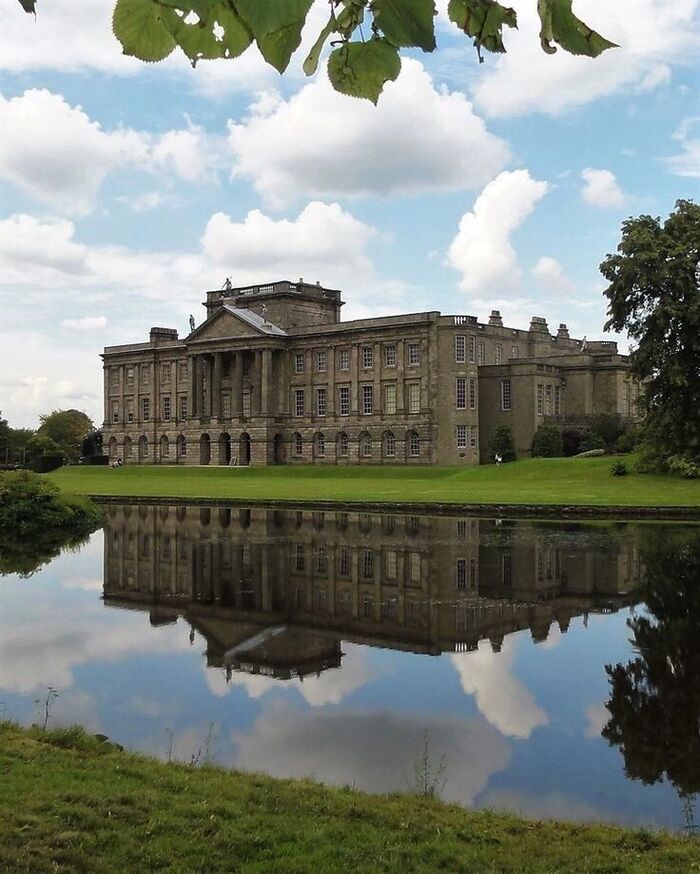
Must-see Literary Getaways: Netherfield and the English Countryside
A short distance from Derbyshire, the rural landscapes of Cheshire and the surrounding Hertfordshire allow you to relive the everyday life of the Bennets. Rolling hills, hedge-lined paths, and picturesque villages evoke the walks of Elizabeth and her sisters, their social visits, and the atmosphere of the balls at Netherfield.
Among the places that best capture this atmosphere are Bodnant Garden and Cliveden, two dreamlike gardens that reflect the elegance and refinement of rural high society. You can also hike the footpaths of Irby or lose yourself in the hills of the Peak District, ideal for imagining the chance encounters between Elizabeth and Darcy, surrounded by the English countryside.
Meryton and everyday life in Hertfordshire
If you want to immerse yourself in the atmosphere of Meryton, the village where the Bennet sisters socialized and met with officers, explore small towns in Lincolnshire or Hertfordshire. Many retain their original Georgian architecture and the charm of markets, cobbled squares, and cafes that seem frozen in time.
These villages are perfect for leisurely strolls, stopping at a tea house, or browsing antique shops, imagining the conversations between Elizabeth, Jane, and their neighbors.
High society in London: perfect for your literary getaways!
The route can continue in London, the setting for several key moments involving Darcy, Bingley, and the Bennet sisters. In the capital, the Mayfair, Bond Street, and St. James’s Park neighborhoods retain the distinguished air of the Regency era and are ideal for a literary walk.
You can also visit the Silk and Lily Museum, or some of the city’s most traditional shops, where the refinement of the period still lingers. Don’t miss one of the historic tea rooms, perfect for imagining the Bennet sisters exchanging confidences or reading letters between sips of tea.
And to complete the experience, Blenheim Palace (Oxfordshire) offers a majestic tour that perfectly recreates the balls, receptions, and aristocratic splendor so prevalent in Austen’s novels.
Make your literary getaways filled with dance, literature, and romance
Many British museums and associations organize period dance events, theatrical performances, and historical reenactments inspired by Pride and Prejudice. Participating in one of these, dressed in Regency attire and learning the steps of a country dance, is an unforgettable way to immerse yourself in the spirit of Jane Austen.
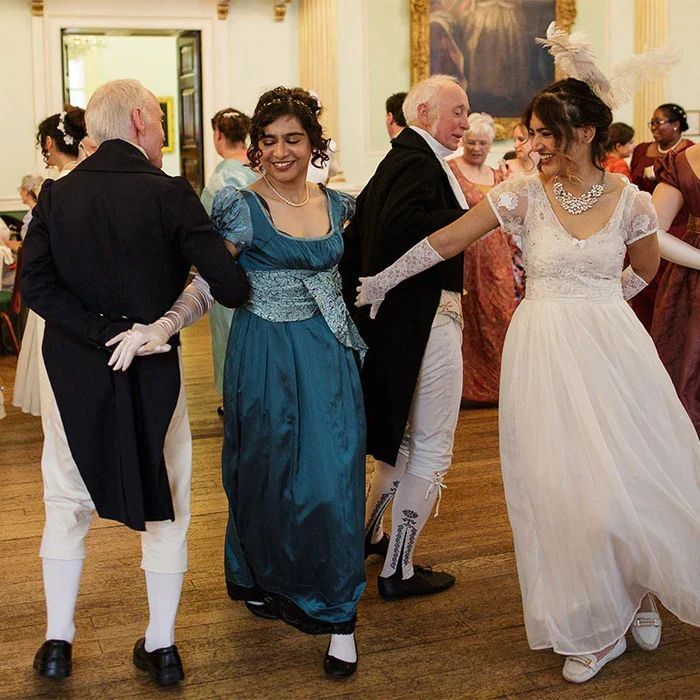
Literary Getaways: Following in the Footsteps of The Hobbit in Middle-earth
Few works have managed to create a world as rich and fascinating as Middle-earth, the universe imagined by J.R.R. Tolkien. This mythical setting, with its unique geography, legendary races, and invented languages, has captivated readers and filmgoers worldwide for generations. Although born in the imagination of the British author, today it’s possible to delve into this universe of rolling green hills, houses carved into the earth, and paths brimming with adventure thanks to a magical corner of the planet: Matamata, New Zealand.
This small town, located in the Waikato region, became the true heart of the Shire, the home of the hobbits. The renowned director Peter Jackson, when filming The Lord of the Rings and The Hobbit trilogies, chose this location for its idyllic landscape, full of gentle hills and verdant meadows that seemed lifted straight from the pages of Tolkien. After filming wrapped, the Hobbiton set was carefully preserved, allowing fans from all over the world to explore it and experience the magic of Middle-earth firsthand.
Today, Hobbiton has become one of the world’s most iconic literary getaways. On a guided tour, visitors can stroll along the Shire’s cobbled paths, visit the hobbit houses—those charming dwellings with round doors and flower-filled gardens—and discover the details that made this setting an icon of film and literature. One of the most anticipated moments of the tour is a visit to Bag End, the home of Bilbo and Frodo Baggins, from whose doorstep began one of the most beloved adventures in modern fantasy.
The tour also includes the picturesque Mill Bridge, the artificial lake that borders the village, and the Green Dragon Inn, where visitors can stop for a craft beer or cider, just as the hobbits did during their celebrations. This moment, with views of the Shire illuminated by the sunset, is one of the most memorable experiences for any Tolkien fan.
But the experience doesn’t end on the set. The area around Matamata offers hiking and cycling routes through hills and meadows that evoke the bucolic landscapes of Middle-earth. You can arrange picnics, visit local farms, or even stay in traditional-style hotels and cottages, prolonging the feeling of having crossed the border between reality and fantasy.
For the most passionate, there are themed tours that combine a visit to Hobbiton with other film locations, such as the Tongariro Mountains, which brought the sinister Mordor to life, or the Glenorchy and Fiordland valleys, where the elven lands and the landscapes of Rohan were filmed.
In short, a trip to Hobbiton in Matamata is not just a tourist excursion, but a true journey into the heart of Tolkien’s imagination. Here, among green hills and round houses, visitors can experience the warmth, simplicity, and joy of hobbit life before embarking—like Bilbo—on their own adventure. It is a perfect destination for those looking to combine nature, cinema and literature in a magical environment where fantasy is still alive.
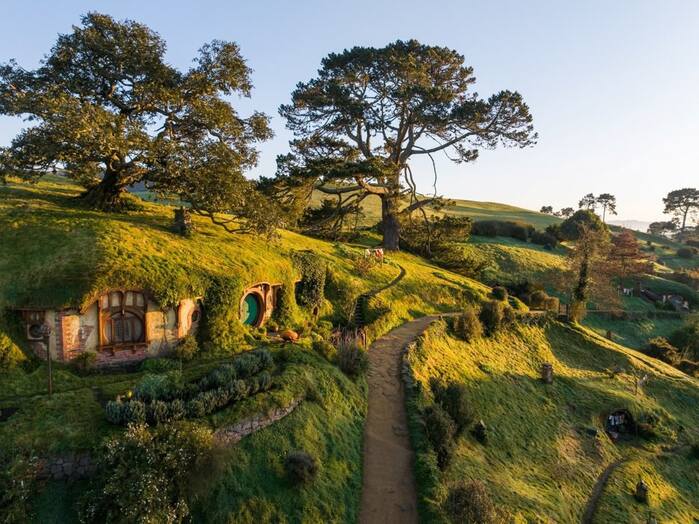
Prague: Franz Kafka’s literary city, a journey between reality and fiction
Visiting Prague as a literary getaway is to immerse yourself in a world where literature and life intertwine with an intensity that is hard to match. Few cities have influenced an author as much as Prague did Franz Kafka, and few writers have captured the unsettling, ambiguous, and profoundly human spirit of a city like he did. The Czech capital was not only his home but also his greatest source of inspiration; a muse that lurks in the shadows of its streets, the majesty of its buildings, and the mystery of its urban labyrinths.
Walking through Prague is like traversing the landscapes that fueled Kafka’s imagination. From the Old Town, with its narrow stone alleyways and Gothic and Baroque facades, to the bridges that cross the Vltava River in the morning mist, everything in this city seems designed to evoke that feeling of awe and oppression that he so masterfully captured in works like The Trial and The Metamorphosis. The leaning towers, the shadowy squares, the doorways that seem to lead nowhere: every corner of Prague feels like a fragment of a Kafkaesque dream.
One of the essential places for any literary traveler is Kafka’s Birthplace, located near Old Town Square. Although the original building was destroyed, a reconstruction stands in its place, housing exhibitions about his life and work. A short walk away is St. Nicholas Church, in front of which Kafka played as a child, and the bustling Charles Bridge, where he strolled, reflecting on existence, loneliness, and the absurd.
Not far away, in the Jewish Quarter (Josefov), much of the area where the writer grew up is preserved. This neighborhood, with its blend of melancholy and faded beauty, profoundly shaped his worldview. Its narrow alleyways, ancient synagogues, and old Jewish cemetery evoke the sense of confinement and mystery that permeates his work. Walking through it is to understand the origins of Kafka’s obsessions: the weight of tradition, guilt, oppressive bureaucracy, and the search for meaning in a labyrinthine world.
Another key stop is the Franz Kafka Museum, located on the banks of the Vltava River, which offers a sensory and symbolic experience. Its exhibits combine manuscripts, photographs, and projections with a haunting atmosphere that immerses visitors in the author’s universe. It’s a place that invites reflection, where one can feel how Prague transforms into a metaphor: the city as a labyrinth, the individual as a prisoner of their own doubts.
And, of course, no literary tour would be complete without visiting David Černý’s Kafka sculpture, a gigantic rotating head composed of dozens of constantly shifting metal plates, reflecting the fragmentation of identity and the writer’s contradictory spirit.
Prague, with its blend of beauty and melancholy, remains a city that inspires writers, artists, and dreamers. It’s a place where past and present coexist, where the architecture seems to tell stories, and where every corner holds an echo of Kafka’s words. Therefore, a literary getaway to Prague is not just a geographical journey, but an inner one: a tour through the mind and emotions of one of the most influential authors of the 20th century, in the city that shaped his imagination and that still breathes his spirit.
Prague is more than the setting for Franz Kafka’s life: it is his own literary character, a mirror of his thought, and an invitation to lose oneself, as in his novels, amidst beauty, bewilderment, and reflection.
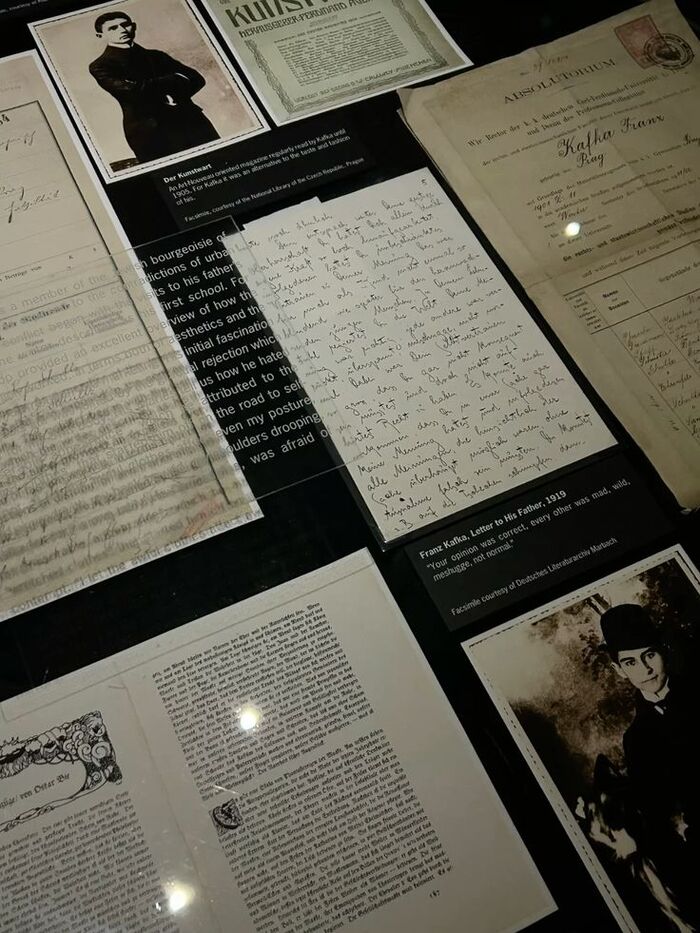
Charlotte Brontë: A Literary Getaway to the Gothic Heart of Yorkshire
Visiting Charlotte Brontë’s landscapes is to delve into one of the most intense and romantic universes in English literature. Among windswept hills, heather-covered moors, and overcast skies that seem to mirror the feelings of their characters, the county of Yorkshire in northern England preserves the atmosphere that inspired the author of Jane Eyre and her sisters, Emily and Anne Brontë, creators of immortal works such as Wuthering Heights and Agnes Grey.
The small town of Haworth is the epicenter of this literary getaway. In this town, nestled among the moors, the Brontë sisters lived with their father, Reverend Patrick Brontë. Their former residence, the Brontë Parsonage Museum, is now a sanctuary for literature lovers. This museum houses the most comprehensive collection about the family: personal belongings, original manuscripts, first editions, and letters that offer a glimpse into the daily lives and emotions of these three writers who forever changed Victorian literature. Walking through its rooms is like stepping back in time and sensing Charlotte’s presence, writing by candlelight as the wind whistles across the moors.
In the surrounding area, the landscape becomes an extension of the Brontë sisters’ inner world. The Yorkshire Moors, with their wild and melancholic beauty, were the natural setting for many of the most memorable scenes in their novels. Hiking the trails that lead from Haworth to the high moors is almost a literary pilgrimage: the same routes the sisters walked for inspiration are still open to visitors, offering an experience that blends nature, history, and emotion.
Among the must-see sites is the Church of St. Michael and All Angels, where the Brontë sisters’ father celebrated Mass and where the family’s remains are interred. Right next door is the old parish school, also founded by Patrick Brontë, which retains its original structure and serves as a reminder of the importance of education in the sisters’ lives.
If you venture a little further afield, you can visit Wycoller, a picturesque village that seems frozen in time. Its ruins and evocative atmosphere are reminiscent of Ferndean Manor, the mysterious mansion where Jane Eyre and Mr. Rochester meet again at the end of the novel. Wycoller’s romantic and somewhat melancholic air invites you to imagine the characters walking through the mist or waiting for a letter by a crackling fire.
Another point of interest is Top Withens, a ruined farmhouse in the middle of the moors that, according to tradition, inspired the iconic house in Wuthering Heights. Reaching it, along paths that wind through hills and expanses of heather, is an almost mystical experience: the silence of the landscape and the force of the wind seem to contain the untamed spirit of Heathcliff and Catherine, the tragic protagonists of Emily Brontë’s work.
The charm of this literary getaway lies in the fact that Yorkshire and Haworth have barely changed since the 19th century. The cobbled streets, the gray stone houses, and the endless landscapes still evoke the same gothic and romantic atmosphere that permeated Charlotte Brontë’s work. Every corner breathes literature, passion, and mystery, allowing one to understand why Jane Eyre remains one of the most beloved novels of all time.
Thus, visiting Haworth and its surroundings is not only a journey into the past, but also an opportunity to delve into the soul of an author who knew how to transform loneliness, rebellion, and love into art. A literary getaway to Charlotte Brontë’s homeland is, ultimately, an immersion in the landscapes and emotions that shaped the most gothic romanticism in English literature.
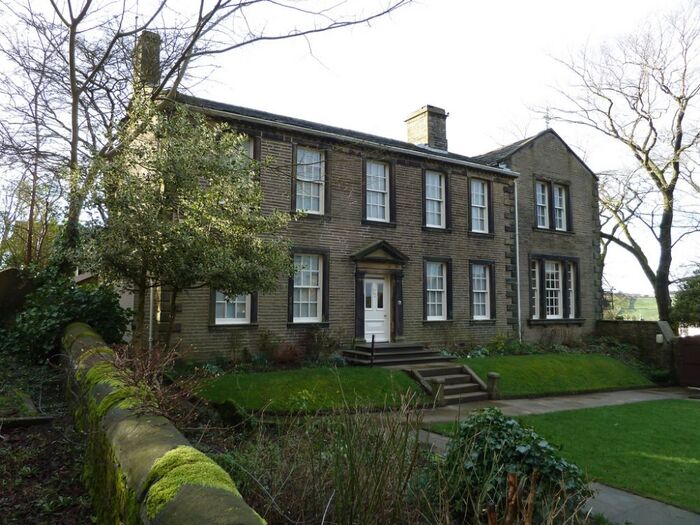
Literary Getaways: Victor Hugo and Les Misérables in Paris
Few cities in the world are as closely linked to a literary work as Paris is to Les Misérables. Walking through its streets is like stepping into the very places where Jean Valjean, Cosette, Gavroche, and Javert lived out their struggles, their loves, and their dreams of freedom. This literary getaway invites you to discover Victor Hugo’s Paris, not only as a fictional setting but as a character in its own right: vibrant, contradictory, and profoundly human.
The Victor Hugo House-Museum: Place des Vosges (Marais)
Your route can begin in the heart of the Marais district, one of the oldest and most beautiful in the city. At number 6 Place des Vosges is the Maison de Victor Hugo, where the author lived for 16 years.
The museum preserves original furniture, manuscripts, letters, and early editions of his works. Each room reflects a facet of his life: from the committed writer and politician to the romantic artist and exile. It is an intimate space that allows you to understand the soul of the creator of Les Misérables and his deep connection to the city.
Another surefire literary getaway is Notre Dame Cathedral in Paris
Just a short walk from the Marais district, the majestic Notre Dame Cathedral rises, one of Victor Hugo’s great literary symbols. While it is the protagonist of another of his works, The Hunchback of Notre Dame, it also appears symbolically in Les Misérables as a representation of the spirit of the people.
Climbing its towers and gazing at the Seine from above is an experience that helps to understand Hugo’s romantic vision of Paris: a blend of beauty, history, and melancholy.
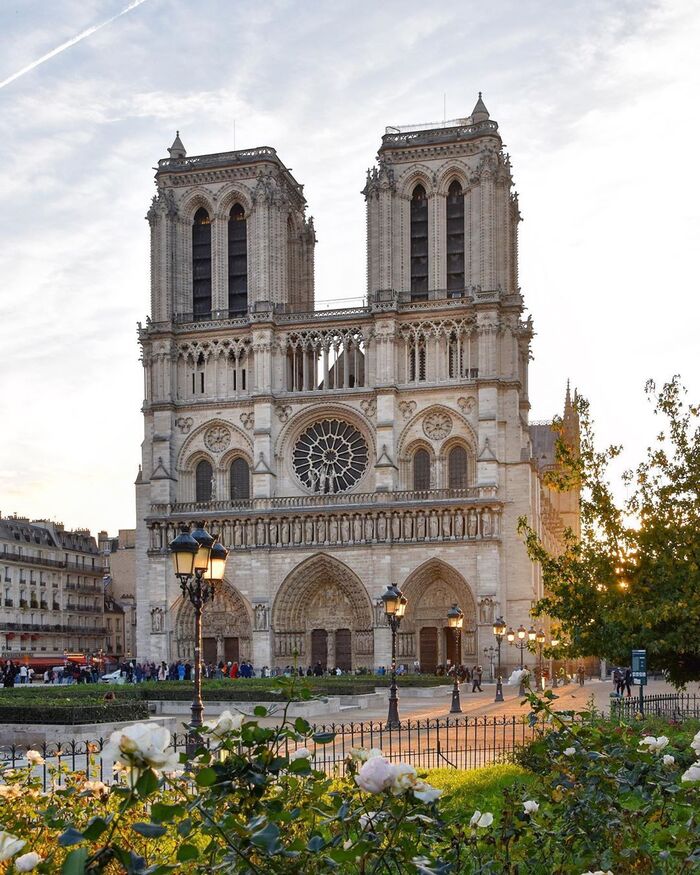
The Latin Quarter and the Seine: Valjean’s Paths
Cross the Pont de Sully or the Pont Marie to the Île de la Cité and continue through the Latin Quarter, one of the most evocative areas for fans of the novel. It was in these streets that several scenes of the riots were set and where Jean Valjean fled carrying the wounded Marius, taking refuge in the Parisian sewers, a symbol of the moral and social underbelly that Hugo sought to denounce.
Today you can explore some of those galleries on guided tours of the Paris Sewer Museum, a curious and original way to delve into the “hidden Paris” of the novel.
The Sorbonne and the barricades of the Faubourg Saint-Antoine are perfect additions to your literary getaways
The Faubourg Saint-Antoine district was one of the centers of the Parisian revolt and a key setting in Les Misérables. The narrow streets, historic facades, and small workshops still evoke the working-class and rebellious atmosphere that inspired Hugo.
From there, head towards the Sorbonne and the Pantheon in the Latin Quarter, where the idealistic youth of Marius and Enjolras dreamed of changing the world. Opposite the Pantheon stands the tomb of Victor Hugo, resting alongside other great French geniuses such as Voltaire and Rousseau, in a place that symbolizes his immortal legacy.
The Luxembourg Garden: Love and Melancholy on Your Literary Escapes
In the Luxembourg Garden, Marius and Cosette stroll along the tree-lined paths that Hugo describes with such tenderness. Even today, among the statues, ponds, and iron benches, you can still feel that romantic atmosphere that blends the everyday with the poetic.
It’s the perfect spot to reread passages from the novel, imagine the lovers’ secret meetings, or simply enjoy the silence and beauty of the place. You’ll love it!
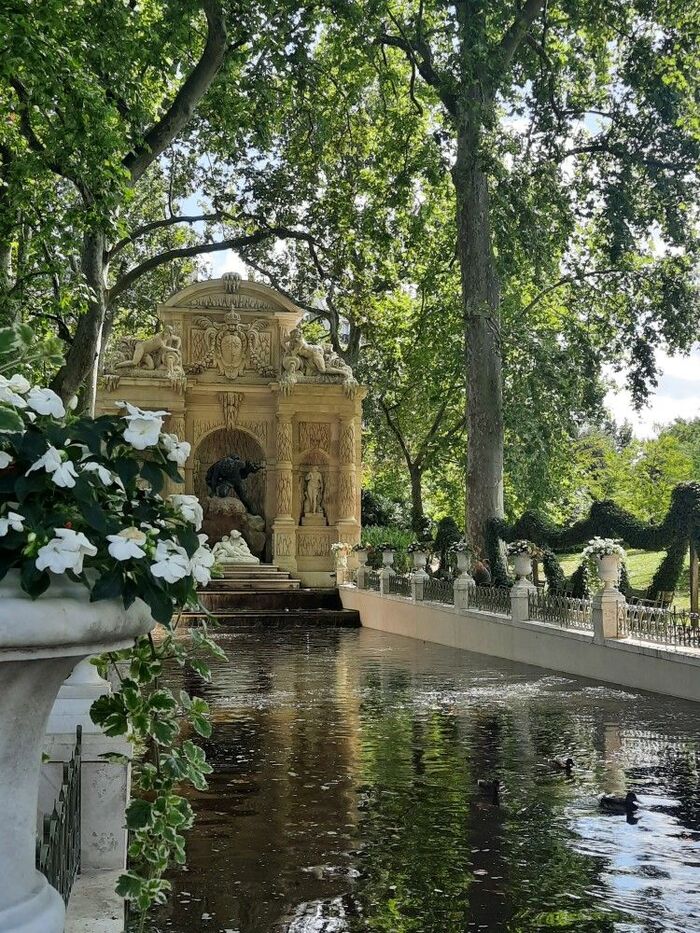
Need help planning your literary getaways? Contact professionals!
If the idea of exploring the settings of your favorite books inspires you, but you don’t know where to start, don’t worry! Natalia Ortiz Events will take care of everything: from selecting your literary getaways to creating a personalized itinerary with activities that bring each page to life.
Forget the preparations and the stress of organizing: trust professionals who will transform your trip into an authentic literary experience, meticulously planned and full of inspiration.
If you’d like to learn more, you can check out film and TV series locations in Spain and some geeky wedding ideas. You can also take a look at this Harry Potter-themed wedding. You’ll love it!
